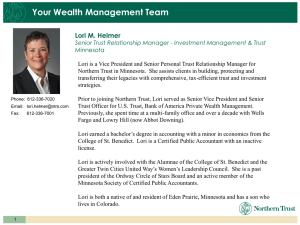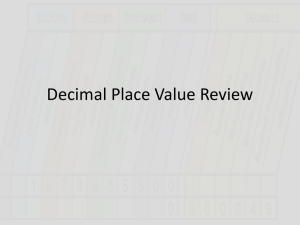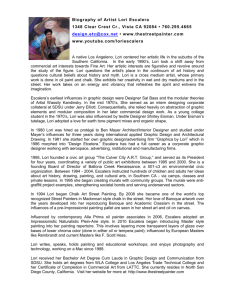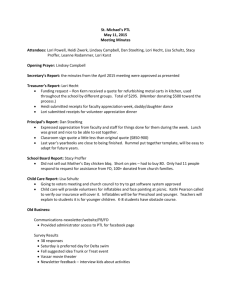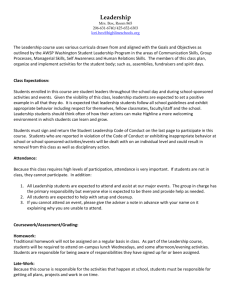Reflection on Learning Object Evaluation - McKee`s E
advertisement
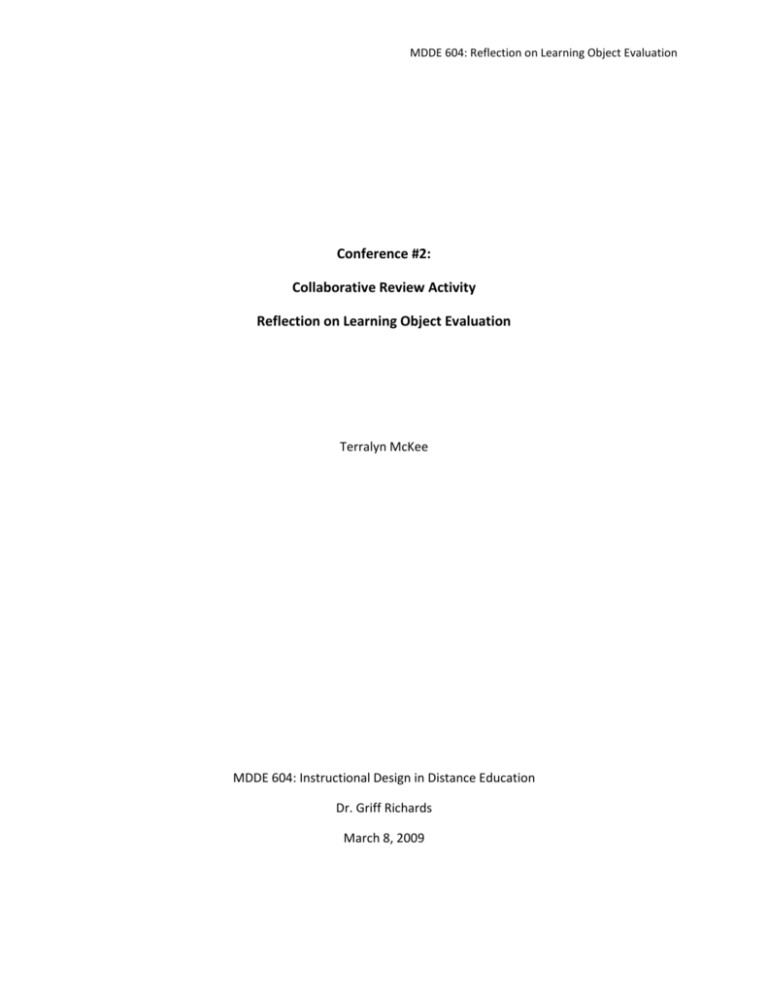
MDDE 604: Reflection on Learning Object Evaluation Conference #2: Collaborative Review Activity Reflection on Learning Object Evaluation Terralyn McKee MDDE 604: Instructional Design in Distance Education Dr. Griff Richards March 8, 2009 MDDE 604: Reflection on Learning Object Evaluation The initial posting of our collective scores seemed to demonstrate a wide deviation in the scoring of the individual LORI dimensions. Cheikh’s and my assessments were more closely aligned in part because of our ongoing discussions of the assignment readings and a cursory review each other’s Learning Objects. While we displayed some disparity in our ratings, they were not nearly as significant as the ratings applied by Sharon and Amanda. Over the course of approximately 7 days, Cheikh, Diana (Ostrich group) and I were able to modify our initial interpretations of the criteria because of our dialogue on the assigned and recommended readings. We shared our confusion and experiences with a number of Learning Objects and were able to work through the confusing portions by consensus. I demonstrated my inexperience through overly rigid scores for each of the elements. Cheikh was far more pragmatic, ba sed on his current work in the field of instructional design, and relied on a premise of ‘is it practical?’ I think it would have benefited our group greatly to have connected prior to the conference to discuss the LORI tool, the working definitions of Le arning Objects, and shared our collective wisdom in the area. While our group was able to reach consensus on criteria meaning and rating, it was an understanding I believe was guided in large part by the previous work done by Chiekh and myself. I don’t believe there were issues with the LORI criteria once we had the opportunity to discuss the rationale for our ratings. The initial deviations were driven by Amanda’s overly generous marking, skewing the overall score deviations. The challenges for this assignment for the group lay in the impreciseness of criteria – its subjective nature of characteristic qualities when working in isolation. Amanda and Sharon also admitted to not having read the assigned and suggested readings thoroughly enough to feel confident in assigning ratings. I found this frustrating given the collaborative nature of our assignment. Their working knowledge of the LORI tool appeared to be quite superficial and based on personal preferences and cursory reviews of some of the elements of their LO. How can LORI work for my community of practice? As stated upfront by Leacock and Nesbit in the Framework document, the LORI scale is a summative tool to balance out validity and evaluation efficiency through broadly interpreted MDDE 604: Reflection on Learning Object Evaluation dimensions of quality. There are trade-offs to be made in using this tool – the higher degree of subjectivity – which can be mediated through convergent processing of learning objects. So, for our learning community here at UCN, which is just beginning the development of Learning Objects and the creation of distance and distributive learning, LORI would be a wonderful tool to support a more accessible process for novice faculty. With limited expertise at our institution, it would initiate the collaborative discussions within faculties and programs about a more uniform and consistent development of curriculum in general, and Learning Objects specifically, with potential for learning repository development. It has already had an impact as I reviewed each of the dimensions of qualityit has provided a ‘guide’ against which to measure each stage of development and overall quality. This activity has allowed me to prioritize my energies rather than focusing too narrowly on content – or design – and introduced dimensions within each quality that I had not previously considered (accessibility issues and standards compliance). It has allowed me to more effectively organize my thinking and sequencing of developmental activities and provided me with examples via the LO we reviewed and how others within the group reacted to each element. With regards to the elements of this activity to keep or change, I have the following recommendations, based solely on my learning styles! KEEP: The required readings were excellent – A Framework for Evaluating the Quality of Multimedia Learning Resources has earned a spot in my collection. It is easy to use, I appreciated the expanded discussion on each of the dimensions. Phone Conference – an excellent medium for connection and discussion. ADD: I found the following articles quite helpful in developing an understanding of Learning Objects – Wiley, D. (2003). Learning Objects: Difficulties and Opportunities. http://wiley.ed.usu.edu/docs/lo_do.pdf MDDE 604: Reflection on Learning Object Evaluation Wiley, D.A. (2000). Connecting learning objects to instructional design theory. A definition, a metaphor, and a taxonomy. http://reusability.org/read/chapters/wiley.doc Downes, S. (2006). Learning Objects: Their Use, Their Potential, and Why They Are Not Dead Yet http://www.slideshare.net/Downes/learning-objects-their-use-their-potential-and-whythey-are-not-dead-yet If this course plans on maintaining a profile for Learning Objects, I would find it helpful to reconfigure the collaborative assignment by: 1) adding a practice opportunity by assigning a LO that groups must make collaborative recommendations on using the LORI scale – it would focus the group as a team more quickly and provide initial practice with and dialogue on the elements of each LORI dimension. 2) providing a working example of a “strong” Learning Object and a “weak” Learning Object – and a summary explanation of the elements that makes them strong or weak examples. For me, this activity added another dimension of consideration when developing course content or moving course-based programs from the classroom into digital formats for access in distributed learning environments. It fit nicely into the sequential development of pedagogical frameworks and pragmatic practices emerging with online and distance learning. My assumption prior to enrolling in MDDE was that distance learning was the ‘poor-cousin’ to face to face learning, a necessary evil that education would need to incorporate to support the changing dynamics of learning. The MDDE courses have demonstrated to me that the real potential and evolution in learning is distributive – and learner focused, whether it be for distance learning on the web or traditional classroom based learning at postsecondary institutions. This course in particular has forced me to examine my attitudes and my practices in course development – which I thought were quite strong prior to this course. With this particular activity I found the nine dimensions of quality provided a more comprehensive reflection of overall content quality than the MDDE 604: Reflection on Learning Object Evaluation traditional formats I learned in my education programs. More emphasis is now placed on universal design – accessibility dimensions – and on adaptations. Even traditional course-based classes are incorporating technology into the classroom blurring the lines between distributive and in class learning. This activity has provided me with a structure for the development of high quality learning objects within my lessons, courses and overall curriculum development. I would recommend training with LORI to all education students, not just distance education specialists as one more tool for use in comprehensive and guided curriculum development. An additional benefit comes from learning how to use LORI effectively, and that is a contribution to open-source knowledge base being developed and shared on the web. This movement has returned education ownership to the individual, a neo-liberalism that has been lost to the narrower domains of education-for-work agenda of recent decades. I would like to contribute to this open format by contributing information and learning objects that rate as high as possible on the quality scale.
